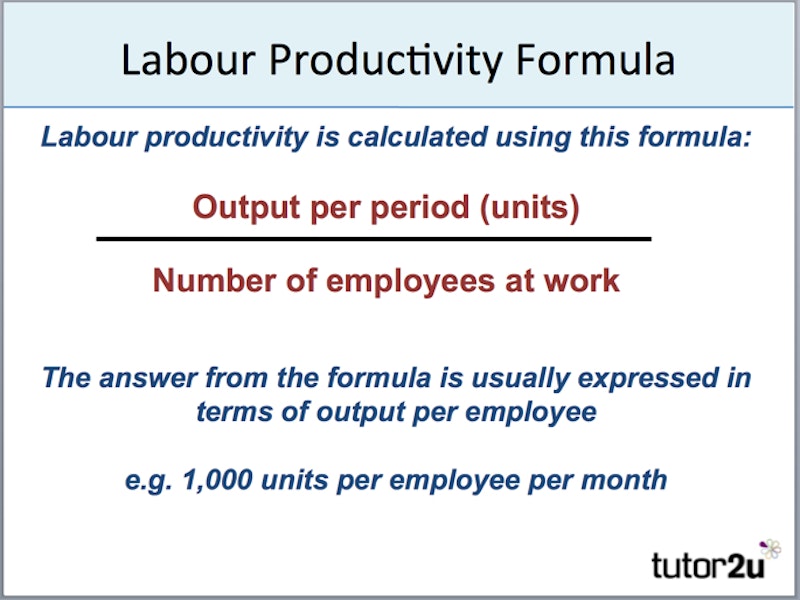Study Notes
Labour Productivity
- Level:
- AS, A-Level
- Board:
- AQA, Edexcel, OCR, IB
Last updated 22 Mar 2021
Labour productivity is concerned with the amount (volume) of output that is obtained from each employee.
Why does measuring and monitoring labour productivity matter?
- Labour costs are usually a significant part of total costs
- Business efficiency and profitability closely linked to productive use of labour
- In order to remain competitive, a business needs to keep its unit costs down
Achieving higher labour productivity is not a simple task. Several factors influence how productive the workforce is: e.g.
- Extent and quality of fixed assets (e.g. equipment, IT systems)
- Skills, ability and motivation of the workforce
- Methods of production organisation
- External factors (e.g. reliability of suppliers)
How can labour productivity be measured? The common formula is as follows:

An example of this calculation is provided below:

How can a business improve its labour productivity? Here are the main approaches:
- Measure performance and set targets – it is often claimed that "what gets measured, gets done!"
- Streamline production processes
- Invest in capital equipment (automation + computerisation)
- Invest in employee training
- Make the workplace conducive to productive effort
You might also like
Financial Efficiency Ratios (Revision Presentation)
Teaching PowerPoints
Cost Minimisation (Revision Presentation)
Teaching PowerPoints

Economies of Scale? Let the Train Take the Grain
8th December 2015
The Jelly Bean Factory and the Productivity Puzzle
20th June 2016
The Experience Curve
Study Notes
Locked-in daffodil prices inflict losses on large scale growers
7th February 2021
3.4.2 Analysing Operational Performance
Teaching PowerPoints
Daily Email Updates
Subscribe to our daily digest and get the day’s content delivered fresh to your inbox every morning at 7am.
Signup for emails